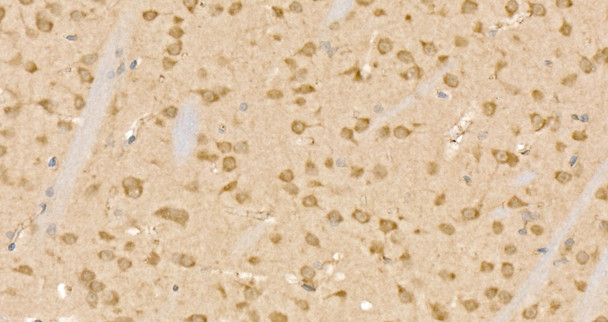Description
CLPB Polyclonal Antibody (CAB24533)
The ClpB Polyclonal Antibody is a valuable tool for researchers studying the ClpB protein, a molecular chaperone that plays a crucial role in protein folding and assembly. This antibody, produced in rabbits, is highly specific to ClpB and has been validated for use in various research applications, including Western blotting and immunofluorescence.ClpB is a heat shock protein that helps in the refolding of denatured proteins, particularly under stress conditions. Dysfunction or dysregulation of ClpB has been implicated in various diseases, including neurodegenerative disorders and cancer.
By using this antibody, researchers can study the expression and localization of ClpB in different cell types, furthering our understanding of its role in health and disease.With its high reactivity and specificity, the ClpB Polyclonal Antibody is an essential tool for investigators in the fields of molecular biology, cell biology, and biomedical research. Its applications extend to studies on protein quality control mechanisms, cellular stress responses, and the development of potential therapeutics targeting ClpB-related pathways.
| Product Name: | CLPB Polyclonal Antibody |
| Product Code: | CAB24533 |
| Reactivity: | Mouse, Rat |
| Applications: | Immunohistochemistry |
| Host Species: | Rabbit |
| Purification Method: | Affinity purification |
| Isotype: | IgG |
| Reactivity: | Mouse, Rat |
| Tested Applications: | IHC-P, ELISA |
| Key Applications: | Immunohistochemistry |
| Recommended Dilution: | IHC-P 1:50-1:200 |
| Storage Buffer: | Store at -20°C. Avoid freeze / thaw cycles.Buffer: PBS with 0.05% proclin300, 50% glycerol, pH7.3. |
| Cellular Location: | Mitochondrion |
This gene belongs to the ATP-ases associated with diverse cellular activities (AAA+) superfamily. Members of this superfamily form ring-shaped homo-hexamers and have highly conserved ATPase domains that are involved in various processes including DNA replication, protein degradation and reactivation of misfolded proteins. All members of this family hydrolyze ATP through their AAA+ domains and use the energy generated through ATP hydrolysis to exert mechanical force on their substrates. In addition to an AAA+ domain, the protein encoded by this gene contains a C-terminal D2 domain, which is characteristic of the AAA+ subfamily of Caseinolytic peptidases to which this protein belongs. It cooperates with Hsp70 in the disaggregation of protein aggregates. Allelic variants of this gene are associated with 3-methylglutaconic aciduria, which causes cataracts and neutropenia. Alternative splicing results in multiple transcript variants.
| Immunogen: | Recombinant fusion protein containing a sequence corresponding to amino acids 572-707 of human CLPB (NP_110440.1). |
| Sequence: | CHSEL IQLVN KELNF WAKRA KQRHN ITLLW DREVA DVLVD GYNVH YGARS IKHEV ERRVV NQLAA AYEQD LLPGG CTLRI TVEDS DKQLL KSPEL PSPQA EKRLP KLRLE IIDKD SKTRR LDIRA PLHPE KVCNT I |
| Synonyms: | CLPB, ANKCLB, HSP78, MEGCANN, MGCA7, SKD3, caseinolytic peptidase B protein homolog |
| Calculated MW: | 57kDa/72kDa/74kDa/75kDa/78kDa |
| Observed MW: | Refer to figures |



